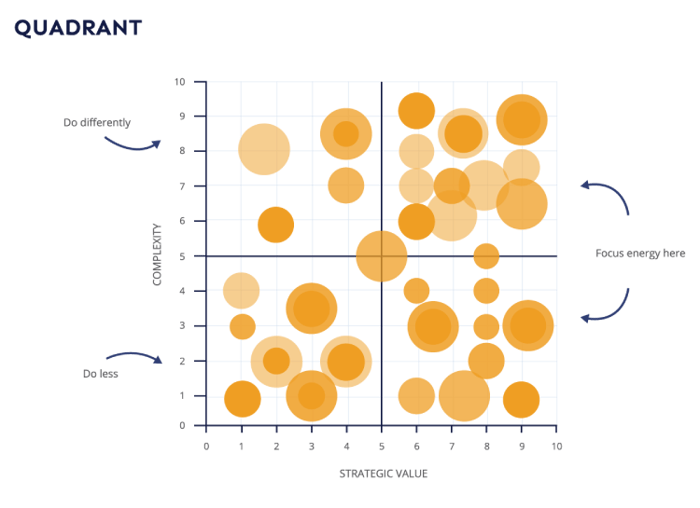How can data align your legal department with business goals?
Companies that include the legal function in corporate strategy can achieve long-term competitive advantage and even higher stock market valuations, according to research from the Massachusetts Institute of Technology.
Case in point: The Walt Disney Company. When its media copyrights neared expiration, Disney’s lawyers transferred that intellectual property into trademarks for various characters, names and images. This not only protected these assets indefinitely, it enabled merchandise licensing – now a multibillion-dollar business.
Sadly, as the MIT Sloan Management Review noted, sophisticated corporate legal strategy is “far more the exception than the rule,” stating that “in our research, we have found that many executives view the law too narrowly as a cost or compliance issue, inevitably forsaking strategic opportunities.”
Moreover, many in-house legal departments are too buried in routine requests to play a substantive role in corporate strategy. Almost half of in-house General Counsel say they spend too much time “fighting fires” to achieve any long-term goals, according to a survey by the FindLaw Corporate Counsel Center.
In that survey, just 45 percent of respondents said their corporate legal department’s priorities aligned with the CEO’s, while 11 percent said there was “no correlation” between the two.
How can we remedy this situation? How do we ensure that in-house counsel are engaged in strategy instead of inundated by legal whack-a-mole?
Legal operations provides a surprisingly straightforward solution: Track your activity, measure its strategic value, and make smart, data-driven change.

How to get started
The path to strategic alignment starts with two questions: What are we doing, and why are we doing it?
Download our legal resourcing quadrant fact sheet, which shows a department’s legal matters mapped by complexity and strategy. The legal resourcing quadrant will help to answer the following questions:
- How challenging is this project
- How important is it to the company’s objectives?
The size of each sphere is proportional to the dollars at stake, adding a third dimension.
Visualizing your legal matters will allow for an analysis of department activity in a meaningful way.

Complex + Low Strategic Value
In the upper left quadrant, legal matters are not likely to move the dial on the strategic plan, but they are legally complex. (At Xakia, we call this the “brain drain” quadrant.) Boutique specialists or unbundling strategies are appropriate here.
Simple + Low Strategic Value
Do not spend considerable time or expense in the lower left quadrant. Efficiency opportunities abound!
Simple + High Strategic Value
In the lower right quadrant, legal matters require familiarity with the company’s strategic goals and are best handled internally - junior legal department members may be the best option.
Complex + High Strategic Value
The upper right quadrant hosts your most exciting work. It requires specialized and experienced legal skills to assess the strategic business impact and construct creative legal solutions. Your most experienced (and expensive) resources should be allocated to this work.
If you are one of the 55 percent of in-house counsel who don’t feel aligned with corporate strategy, your legal matters are likely to be heavily concentrated on the left-hand side. Charting and analyzing your data helps you make an informed plan to address this “fire-fighting” work and free up time for more weighty matters.
Download the legal department resourcing quadrant to learn more.
Act on your intel
Armed with diagnostics, you can take action to mitigate your low strategic value workload:
For complex matters
Look at “unbundling” batches or find a boutique firm that can provide the specific expertise without Big Law cost.

For simple legal matters
Consider automation or inexpensive outsourcing. Use legal analytics software to inform which business units are generating this work. You can train clients or provide tools to self-resolve these matters. (Of course, bear in mind Peter Drucker’s sound advice: “There is nothing so useless as doing efficiently that which should not be done at all.” You may be able to eliminate some of these legal matters too).
While it is unrealistic to push all of your work into the high-complexity, high-value quadrant, tracking and analyzing your legal matters will help you achieve a balance – and certainly a closer alignment with your CEO’s objectives.
Moving forward, tracking your matter's value can bolster your team’s performance and reputation as you know the strategy and show your value:
- By requiring each team member to measure the strategic value of their work, you engage each individual with the strategic goals of the company. This will inform all legal, risk management and resource allocation decisions you make – aligning you with the CEO.
- Business leaders can see a data and evidence-based account of the value you bring by protecting the company and advancing its goals. Your C-suite will appreciate productive, evidence-based discussions about budgets, cost allocation and resourcing needs.
As the MIT researchers concluded, “In-house legal departments can be more than just cost centers. … They can be powerful instruments for generating value and securing a competitive advantage.”
Download the legal operations white paper now to get started
Download the legal operations white paper now to get started, or speak to one of our consultants to find out how we can help you. Find out how a legal operations software can help your in-house team.